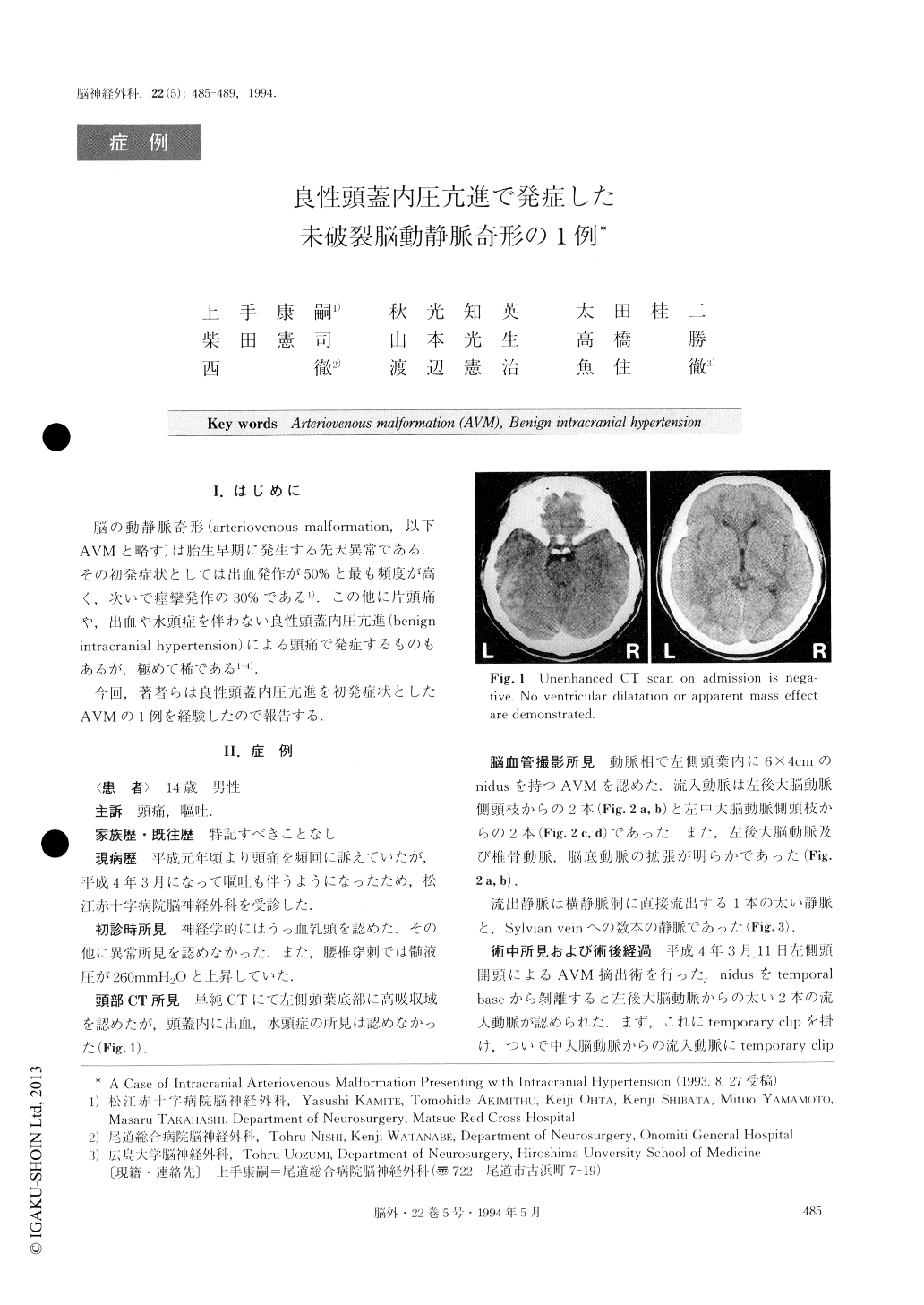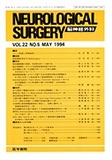Japanese
English
- 有料閲覧
- Abstract 文献概要
- 1ページ目 Look Inside
I.はじめに
脳の動静脈奇形(arteriovenous malformation,以下AVMと略す)は胎生早期に発生する先天異常である.その初発症状としては出血発作が50%と最も頻度が高く,次いで痙攣発作の30%である1).この他に片頭痛や,出血や水頭症を伴わない良性頭蓋内圧亢進(benign intracranial hypertension)による頭痛で発症するものもあるが,極めて稀である1-4).
今回,著者らは良性頭蓋内圧亢進を初発症状としたAVMの1例を経験したので報告する.
A case of unruptured arteriovenous malformations (AVMs) presenting benign intracranial hypertension is reported.
A 14-year-old male suffered from headache and papilledema. Intracranial pressure was 260mmH2O. Un-enhanced CT demonstrated no evidence of hemorrhage or hydrocephalus. Angiogram demonstrated a large AVM in the left temporal lobe supplied by the left posterior cerebral artery and left middle cerebral artery. It drained into the transverse sinus. Surgical excision of the AVM eliminated the headache and papilledema.
AVM carses hemorrhage in 50% of cases, seizure in 30%, and other focal neurological deficits in 20%. Be-nign intracranial hypertension is an uncommon effect of unruptured AVMs. Only 13 cases have been reported in the literature.
Benign intracranial hypertension associated with un-ruptured AVMs occurs in young patients with high flow AVMs that drain into the major sinus. The mechanism of intracranial hypertension associated with unruptured AVM is unknown.
However, there are several possible mechanisms of intracranial hypertension associated with unruptured AVMs. The arterial blood shunting into a major sinus impedes venous return from the surrounding brain. That causes the increase of cerebral blood volume and the elevation of sinus pressure. This mechanism would reduce CSF absorption and would increase intracranial pressure.
Pharmacological therapy is ineffective in controlling intracranial hypertension. Surgical excision of AVM effectively reduced intracranial hypertension. Thus, sur-gical excision of AVMs, if it can be done with low risk, is the treatment of choice to decrease intracranial hypertension in patients with unruptured cerebral AVMs.

Copyright © 1994, Igaku-Shoin Ltd. All rights reserved.


